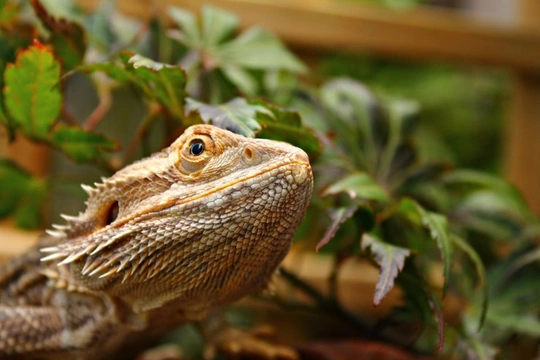
Six hidden dangers that may be lurking in your reptile terrarium
Keeping exotic pets such as the corn snake or the leopard gecko is something that is becoming ever more popular and commonplace here in the UK, and some of the easier to keep reptiles such as these can make for very rewarding and unusual pets, without hours each day needing to be dedicated to their care and maintenance. Once you have set up and established your pet’s terrarium, it should be reasonably simple to keep the environment stable with a little time and know-how, and to nip any problems in the making in the bud early on, before they pose a risk to your pet.
However, while the basics of reptile keeping can be picked up very quickly, there are a few common anomalies and mistakes that novice keepers are apt to make, and which can pose a direct danger to your scaly pets!
In this article, we will look at six hidden dangers that may be lurking in your reptile terrarium, and how to avoid allowing them to pose a risk to the health of your pet. Read on to learn more.
High temperatures
Most terrarium-kept reptiles need an additional source of heat in their tanks to keep them comfortable and at an appropriate temperature, but your pet is also likely to be susceptible to suffering from the effects of too much heat as well. Find out what temperature parameters are considered to be the perfect fit for your own pet, and monitor this carefully by placing two different thermometers in different areas of the tank, in order to get a true reading of the average.
Heated rocks for basking are also essential for some reptiles, but using heated rocks rather than lighting or heat mats to produce heat is something that has fallen out of fashion within recent years, as heated rocks may potentially cause burns on your pet’s skin.
Poor quality water
Some reptiles such as turtles need a terrarium that is constructed of both dry areas of land and water for bathing and swimming, and the quality of the bathing water should be carefully monitored to ensure that it is clean. Reptiles are not among the most tidy or clean of animals, and will sometimes leave uneaten food in their water, or even go to the toilet in it, which can pollute the water and pose a risk to both their health and hydration levels, as they are unlikely to be willing to drink polluted water!
Inadequate lighting
The vast majority of domestically kept reptiles need exposure to UVB light in order to thrive, as UVB lighting is essential for production of vitamin D, and the metabolism of calcium.
A light bulb or strong daylight to illuminate the terrarium may let you view your pet, but without a special UVB lighting array, the pet you are looking at is unlikely to be in good health! It is also worth noting that older UVB bulbs begin to lose their effectiveness before they burn out altogether, so schedule bulb changes regularly throughout the year, whether the bulbs appear to be losing their effectiveness to your naked eye or not.
The wrong sort of substrate
A suitable substrate for your reptile’s tank and to use as their bedding is vital, and what exactly makes the substrate a good choice can vary a lot between species.
Bedding that holds moisture such as certain types of bark can lead to high levels of humidity in the terrarium, and while sand might seem like a good pick for reptiles of all types, it can be harmful to some smaller lizards, who may inadvertently ingest it when consuming prey.
Toxic plants
Common and good advice for all reptile keepers is to use only artificial plants as decoration in the tank, unless your pet specifically needs to have access to certain types of plants to eat. However, many reptile owners wish to grow real plants in their terrarium alongside of their pets, and it can be hard to choose plants that are safe, as the list of potential toxins to reptiles is rather long.
Live prey fighting back!
If your reptile eats live prey, you should already be following sensible guidelines on the right sort of food for your pet, how large their offerings should be, and how often they should be fed.
Uneaten live food should be removed from the tank promptly after your pet has had a chance to eat their fill, as in some cases, live prey may actually affect the health of your pet by biting them or injuring them as they scuttle around!
Even if your reptile has killed their prey, remove uneaten but dead food promptly too, as if this is left to decay within the tank, it can pose a health risk to your reptile and their environment.



